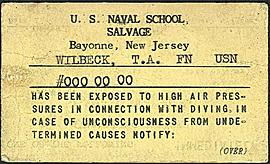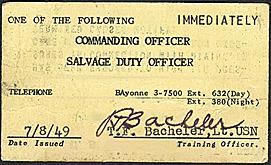The Salvage Divers
Salvage divers had some unique equipment available. The most recognizable
piece of gear was the helmet or "hat". It was made of spun copper
and had brass and bronze attachments and fittings. The helmet and
the breastplate weigh approximately 60 lbs.
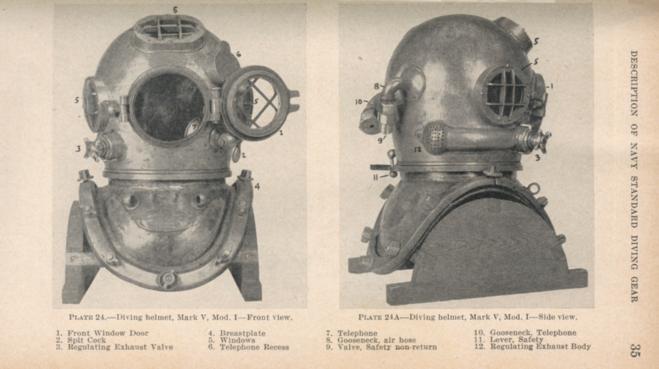
From Diving Manual, Navy Department, 1943
This is a modern - you can go buy one today - DESCO Mk V diving helmet.
It ain't changed much from the one above.
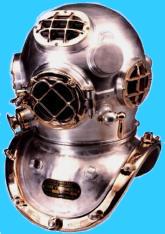
DESCO
The glass thingys you look through are called "lights" to purists.
Note that on the Navy diagram at top of page, they are called "windows".
The original lights were glass. Modern lights are made from acrylic
plastic.
The diver wore weighted shoes and a belt loaded with weights to keep
his head up and feet down. If he did not maintain this position,
his suit could loose pressure or he would "blow up", meaning his suit would
inflate to where he would look like the Pillsbury Dough Boy and be completely
helpless. If the suit lost pressure, he might be subject to "squeeze".
That might mean his entire body would be forced into the small confines
of the helmet by the surrounding pressure. That would not be a pretty
sight, nor would it be survivable. These are extreme scenarios, but
possible under the right conditions.
The shoes were made of leather, soled with layers of hardwood and lead.
They had a cast bronze toe cap. The shoes weighed about 40 lbs. per
pair.
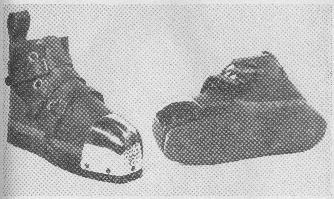
From Diving Manual, Navy Department, 1943
Because of the high pressures the divers were subjected to, they could
suffer from many injuries or conditions. Some of the more serious
were air embolism, or nitrogen narcosis. Nitrogen narcosis is also
known as "the bends." Many divers carried cards to warn medical personnel
or care givers that the effects of diving injuries and "diseases" could
show up many hours after the diver was out of water. The card shown
below is one issued to my father in Salvage School.
Go to next Salvage Divers page
Return to Main page
Copyright © 1999 - 2007, Tom Wilbeck 




